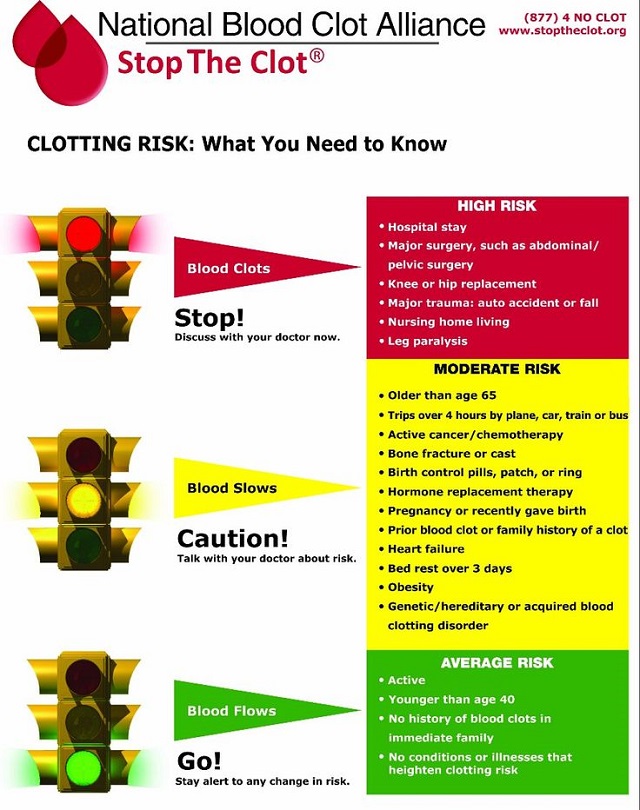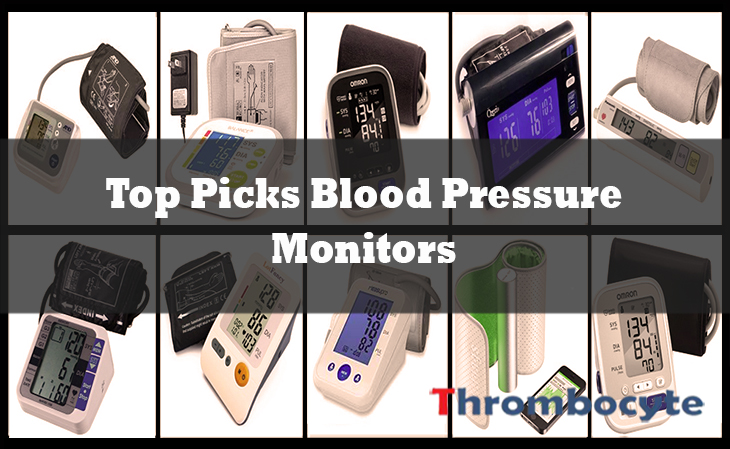Heavy bleeding can result to insufficient amount of blood in the body that can result to further complications when not controlled immediately. This means it is important to avoid any progressive, constant, or excessive bleeding. To achieve this, the blood has a unique mechanism that involves a blood component called platelets, which serves the function of stopping bleeding.
The platelet is a crucial component of the blood which is produced in the bone marrow. In case of injury to a body tissue that results to bleeding, platelets become activated to form a barrier against blood loss.
However, due to a variety of factors, the platelets may react differently and become hyper-responsive, or produced in higher amounts to an extent that they unnecessarily initiate blood clotting without injury. This may lead to abnormal blood clotting in body tissues like blood vessels and internal organs, even in sensitive areas like the lungs.
A blood clot can also be formed in the gastrointestinal track, which may result to a display of blood in the stool. There are several factors as discussed below to detail what surrounds the presence of blood clots in stool.
Blood Clots in Stool
1. Causes of blood clots in stool.
The presence of blood clot in the stool can be an indication of thrombosis that may be present in the GIT. The development of thrombosis in the digestive system is actually a common cause for blood clots in stool.
The color of the blood that accompanies the blood clot will help determine which particular area of the GIT has the clot formed.
When the color is black and tarry, it indicates that the bleeding or blood clot came from the stomach area where varied microorganisms like H. Pylori may have predisposed the condition, resulting to the characteristically dark in color.
If the blood accompanying the clot is bright red in color, then it indicates that the blood clot may have formed within the intestinal area. This shows that no bacteria were able to act on the clot before being released.
The formation of blood clot in the stomach or intestines are not the only causes of blood clots in stool. The blood clot may also form in other parts of the body before having progressed to the stomach or gastrointestinal system. Blood clots in stool may also be due to cancer of the colon.
2. Diagnosis for blood clots in the stool.
Before treatment can be implemented, an accurate identification of cause and location of the blood clot should be established. The initial step in diagnosis will be physical examination and study of historical background. This will also be helpful in determining thrombosis-related risk factors involving the patient.
If history and physical examination calls for more medical tests, a series of diagnostic procedures may be necessary. It may include anoscopy, flexible sigmoidoscopy, colonoscopy, radionuclide scans, blood tests, and angiograms. The doctor will determine the most accurate and appropriate method applicable to the patient.
3. Symptoms associated with blood clot in the stool.
The appearance of blood in the stool may indicate an underlying blood clot in the GIT but not always the case. Besides, a blood clot may only be visible on the toilet paper used for wiping the anus if absent in the stool.
Analysis of the blood clot will help in determining the position of the clot by its color. Apart from this, the anus may develop signs of itching. Some symptoms that may also display include stomach upset and sometimes, diarrhea.
4. Blood clot in the stool can due to blood disorders.
A blood clot in the stool may also result from any underlying blood disorder in the patient. It is not very uncommon to develop unnecessary blood clotting in the stomach or gastrointestinal system when a clotting disorder is present.
Blood clots in stool has also been observed in patients with cancerous tumors as well as inflammatory bowel syndrome. Stomach cancer and colon cancer are some serious medical concerns that are also known causes of blood clots in the stool. Also, any other disease that develops internal bleeding can result to a blood clot in the stool of the patient.
5. Blood clots in stool may accompany other signs and symptoms of thrombosis in general.
Other symptoms of thrombosis may be experienced along with the display of blood clots in the stool. These symptoms include general body weakness, fatigue, rapid breathing, increased heart rate, dizziness, and shortness of breath.
The signs and symptoms that accompany the display of blood clots in stool will altogether help in identifying specific details in the diagnosis of the thrombosis that has developed.
6. Smoking and blood clots in stool.
Cigarette smoking is widely known to be a threat to general body health. A development of thrombosis as evidenced by blood clots in stool can be associated as a result of smoking.
People who smoke have a higher chance of developing bowel cancer. Apart from that, it makes the stomach environment a possible location for the formation of abnormal blood clotting which ends up noticeable in the stool. Hence, to avoid smoking reduces the risk of thrombosis in the digestive system.
7. Blood clot in the stool does not necessarily indicate that pain will be present on defecation.
When a patient experience pain when passing out stool that has blood clots, it may be due to another medical disorder other than thrombosis. The blood clot does not have an effect on the actual passing out of the stool, and it should, therefore, be painless.
8. Possible risks associated with blood clots in stool.
Blood clot in the stool can be a direct indication telling that clots are present in the gastrointestinal system or the stomach. Generally, blood clots can be dangerous considering the general possibility of being dislodged into the circulating blood and moved into some other parts of the body creating greater risk for worse problems.
For instance, if the blood clot moves to the heart, it can lead to a heart attack. In some cases, the blood clot moves to the lungs and even to the brain. The presence of blood clots in vital organs can result to fatal outcomes such as death or paralysis.
9. Preventing blood clot in the stool.
Blood clots in the stool can be prevented in several ways. Since some blood disorders that result to blood clotting are inherited, the first approach in preventing the formation of blood clots is getting to know your blood clot risk factors.
Identifying your risk will allow you to determine ways in controlling and managing existing dangers with the help of a medical practitioner. In fact, simply maintaining a healthy body weight reduces the risk of blood clot formation in the body.
Research asserts that smoking raises the probability of thrombosis or abnormal clot formation. To prevent this, smoking should be avoided at all costs. Drinking enough amounts of water will also help in preventing unnecessary blood clotting.
10. Treatment of blood clots in stool.
When the signs and symptoms have been confirmed by series of medical diagnostic procedures leading to the identification of the underlying condition, immediate treatment may be required.
The most common method in treating blood clot is the use of anticoagulants. Anticoagulants are also called blood thinners.
They work in two ways: First, it’s all about slowing down the time it takes for blood clots to form. This is possible by reducing the reaction rates of platelets. The second way is preventive in nature against the growth of blood clots that have already formed. Continuous growth of the clots may result in complete blockage of blood vessels.
The anticoagulants are classified in two: fast acting and regular anticoagulants. The primary difference is around the speed of action where fast acting anticoagulant is used when the blood clot possesses greater danger to the body.
Apixaban, heparin, and warfarin are some examples of anticoagulants. Anticoagulants, however, have some side effects which include stomach upsets and further bleeding.
For a more comprehensive info behind the formation of blood in stool, check out the ultimate guide on blood in stool here.

- READ MORE




